
Reading & Resources
School Administrator, November 2019
Book Reviews
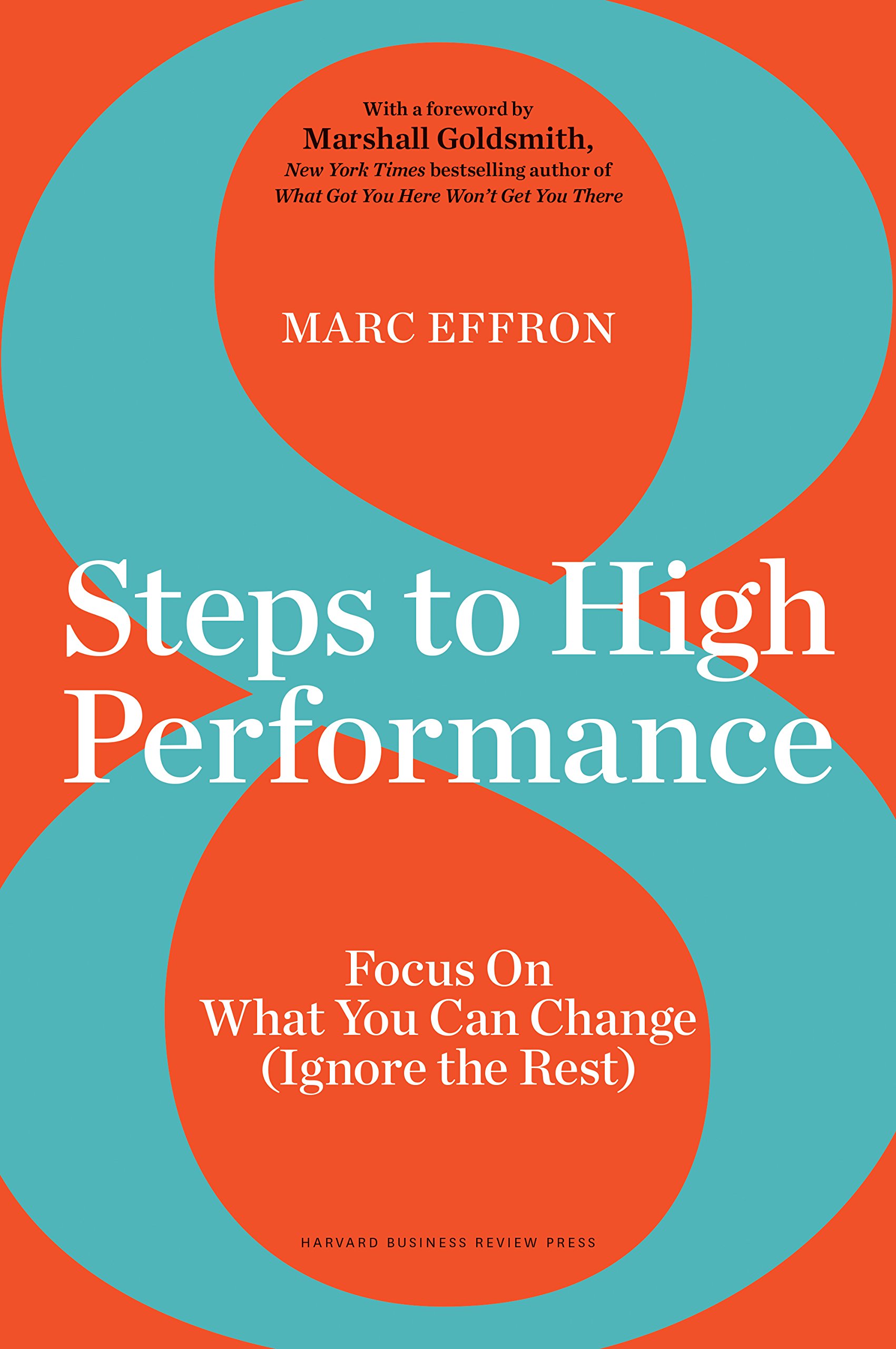
8 Steps to High Performance: Focus On What You Can Change (Ignore the Rest)
by Marc Effron, Harvard Business Review Press, Cambridge, Mass., 2018, 206 pp. with index, $30 softcover
Written by talent consultant Marc Effron,
8 Steps to High Performance is based on the assumption that there is conclusive science related to the traits and behaviors that contribute to high performance, and that these findings should be widely and succinctly shared with all workers.
High performers at work are those who deliver their highest potential performance at maximum efficiency. High performers further distinguish themselves in that they consistently outperform others.
Effron makes the case that, to be a high performer, you must focus not on the 50 percent of factors that are fixed — and unfairly provide a natural advantage to some, like socio-economic background, looks, personality, etc. — but instead on the other 50 percent of the factors that contribute to our work performance that are not fixed. In other words, “the flexible 50 percent” of factors that we can personally control and change.
The book is structured around the eight highly researched “flexible 50 percent” factors that lead individuals to high performance. These factors are identified in each chapter title. Within each chapter there are numerous research citations and field-based references that further build on each factor, as well as a wide array of inventories, charts and practical suggestions.
As educators, we often shy away from books that are highly geared toward improving business acumen and/or self-promotion, but this book should not be readily dismissed. Although it is heavily laden with examples from business, the messages about work performance apply across sectors.
When used within a values-grounded context of serving others, the clarity of focus on individual improvement in
8 Steps to High Performance can help inform coaching and mentoring strategies for new and aspiring leaders.
Reviewed by Mary B. Herrmann, clinical assistant professor, Department of Education Policy, Organization and Leadership, University of Illinois at Urbana-Champaign
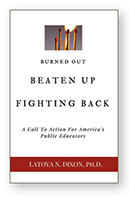 Burned Out, Beaten Up, & Fighting Back: A Call to Action for America's Public Educators
Burned Out, Beaten Up, & Fighting Back: A Call to Action for America's Public Educators
by Latoya Dixon, self-published, 2018, 130 pp., $24.99 softcover
In
Burned Out, Beaten Up, & Fighting Back: A Call to Action for America's Public Educators, Latoya Dixon makes the case for reclaiming the debate on public education. She is currently a state-level leader in education, but the book draws on her experience as a principal, teacher and product of public education. This book serves as a clear and concise call to action on reshaping the public education narrative.
Dixon has done a tremendous job of putting what many of us think and feel into words on the page. We know of the tremendous work happening in our schools on a daily basis, but somehow that often gets lost in all the “noise.” As the national conversation on teacher recruitment and retention rages on, this book gives system leaders a valuable look into why some people are leaving or not even entering our profession.
Each chapter follows a similar format, and includes stories from the field, evidence of what the author talks about and then a call to action. My favorite parts of the book are the “call to action” sections because each provides real world ideas and examples.
The target audience is all educators and everyone interested in public education. We know we need to have a conversation on the state of public education and how we can reclaim control of the narrative. We want to ensure it accurately reflects what is happening in our schools.
Burned Out, Beaten Up, & Fighting Back would serve as an excellent discussion starter in any community. I can imagine it being used in a book study for school faculty, principals and even community members.
Reviewed by Michael Waiksnis, executive director, middle and secondary education, Fort Mill, S.C., Schools
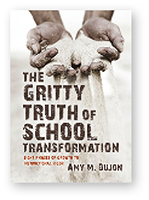
The Gritty Truth of School Transformation: Eight Phases of Growth to Instructional Rigor
by Amy M. Dujon, Learning Sciences International, West Palm Beach, Fla., 2018, 136 pp., $24.95 softcover
The Gritty Truth of School Transformation describes the school transformation process at Acreage Pines Elementary School in Palm Beach County, Fla. The author of the book and leader of the process, Amy M. Dujon, shares the school’s experiences as one of the first schools for rigor and its journey of growth to instructional rigor.
The tone of the book is professional but realistic in its description of not only successes, but of pitfalls and lifelong lessons. There is a plethora of information for any district or school that can easily be emulated and utilized for improvement of practices and processes that will improve instructional rigor. Unlike other educational improvement and leadership books, the information shared can be used for any institution of learning, regardless of resources and transformation experience or background knowledge.
The book is reader-friendly due to the author’s choice of organizational design and style. It is divided into two parts: Part I thoroughly describes the five phases of the school’s transformational process and is appropriately termed “the productive struggle” to remind us that change can be difficult, but worthwhile. Part II provides insight on the risks, rewards and reflections. Each chapter ends with a summary of key leadership strategies, pitfalls and navigation tips. The conclusion of the book provides motivation and encouragement to endure the change processes and “push beyond the limits” to achieve the desired results.
As an educational leader in a rural, struggling area of northern Mississippi, I find this book to be both informational and inspirational. I would recommend it, not only to school leaders, but district leaders and all educators tasked with making curriculum and instructional decisions in a school or school district.
Reviewed by Xandra Brooks-Keys, academic coach, North Bolivar Consolidated School District, Shelby, Miss.
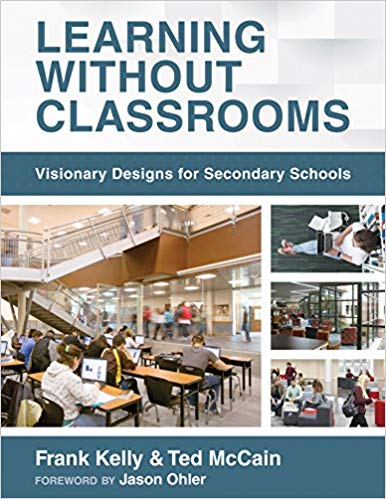
Learning Without Classrooms: Visionary Designs for Secondary Schools
by Frank Kelly and Ted McCain, Solution Tree Press, Bloomington, Ind., 2019, 202 pp. with index, $37.95 softcover
For the past 19 years, an excessive amount of literature has emerged describing what 21st century schools should or should not look like. Very few offer specifics about what exactly the classroom of the future should entail, but in Learning Without Classrooms: Visionary Designs for Secondary Schools, future-ready schools are presented by the authors in great detail. Frank Kelly is an architect in Texas and Ted McCain is director for the Maple Ridge School District in Vancouver, British Columbia.
This work will be helpful for leaders that recognize the 1908 “factory model” of secondary classrooms, organized into content-focused class periods denoted by a ringing bell schedule, is no longer serving students of the 21st century. As more employers cite the need for “soft skills” such as communication, collaboration and creativity, public schools will be faced with the task of evolving or facing irrelevance in the coming years. As educators struggle to envision the form and function of alternative models of secondary schools, works like this book will provide possibilities.
An important facet of this work is that it does not provide one specific model of what future-ready classrooms must look like, but instead focuses on elements in several different proposed designs (some tech-oriented ones containing digital assistants and artificial intelligence resemble futuristic sci-fi films). This flexibility appears to have been intentional, as the authors continuously point to the importance of advisory formats, personalized learning experiences and flexible workspaces.
In the latter part of the book, the authors provide various learning designs and include blueprints in order to assist in the visualization of these revolutionary designs. What most school administrators will find helpful are the numerous case studies involving the upgrade of an existing building. In other words, the book is not necessarily about building and then opening a brand-new school of the future as much as it is about redesigning established ones in order to meet the needs of students of the future. Practical examples provide floorplans that include plentiful windows offering natural light as well as energy efficiency, outdoor dining courtyards, large commons areas, and career and technical education wings.
While the authors do an excellent job of making the case for revising approaches to delivering instruction in the age of digital natives, the distinctive value this book provides is the practical alternative ideas that provide truly visionary designs needed for Learning Without Classrooms.
Reviewed by Todd Dugan, superintendent, Bunker Hill CUSD #8, Bunker Hill, Ill.
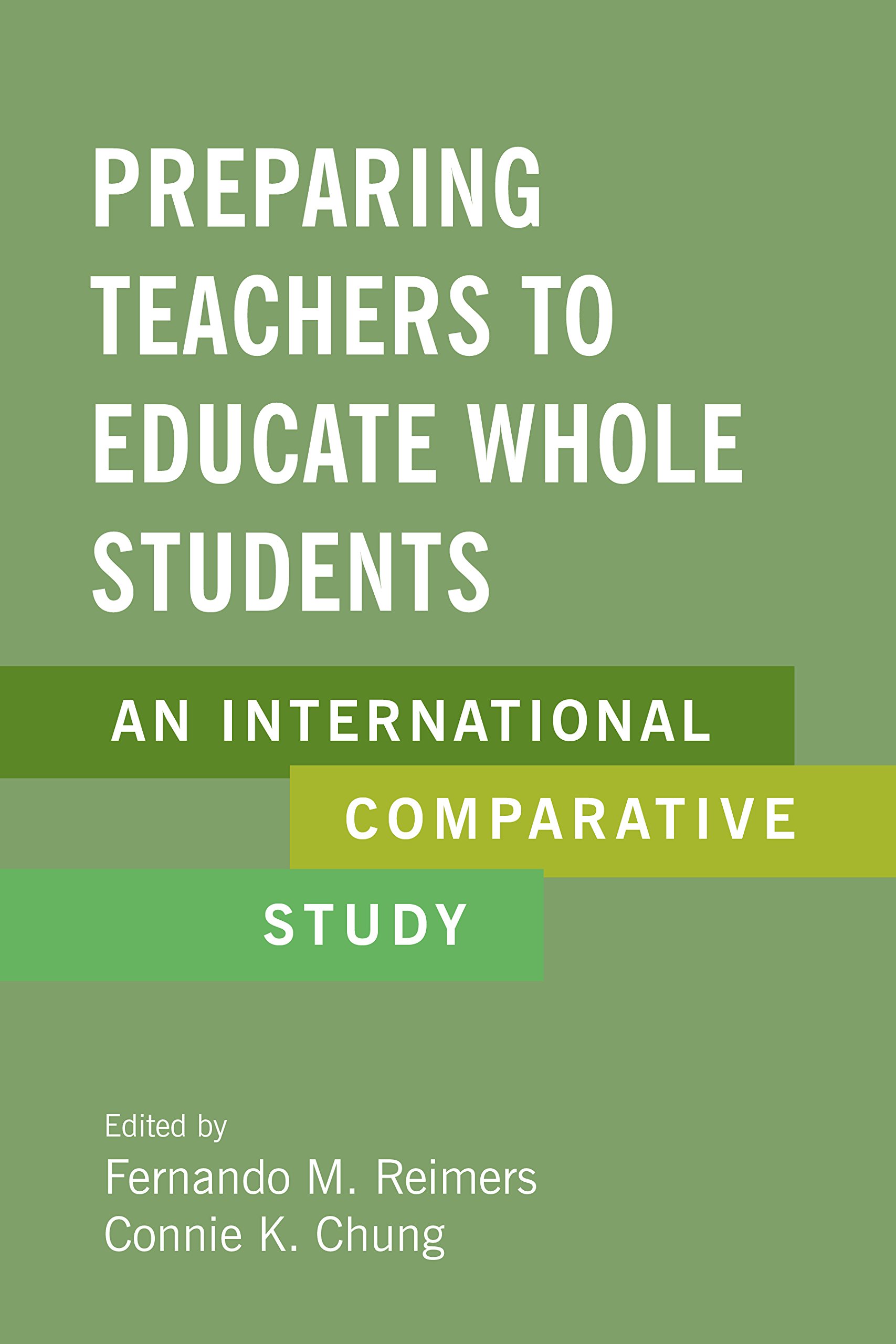 Preparing Teachers to Educate Whole Students: An International Comparative Study
Preparing Teachers to Educate Whole Students: An International Comparative Study
edited by Fernando M. Reimers and
Connie K. Chung, Harvard Education Press, Cambridge, Mass., 2018, 316 pp. with index, $34 softcover
Fernando Reimers, Ford Foundation Professor of the Practice of International Education at Harvard University, and researcher Connie Chung describe how leading educational organizations address inequality, global economic change and the need to prepare teachers and principals with the capacity to approach complex challenges with integrity. Too often, schools serving low-income children have prioritized the teaching of core academic skills and offered an expanded curriculum only for more privileged students. At a time of global economic change, students need to develop an entrepreneurial attitude, initiative, teamwork, flexibility and collaborative problem-solving skills.
Traditional school reform emphasizes improved instruction in the academic disciplines; competencies necessary for education in the 21st century include education in the social and emotional domains, such as collaboration, self-awareness and life skills.
Preparing Teachers to Educate Whole Students is a unique resource showing the reader where and how 21st century education is already happening in Chile, China, Columbia, India, Mexico, Singapore and the United States.
Preparing teachers is critical, as they can’t teach 21st century skills if they, themselves, do not possess such competence. Similarly, an inquiry-based science program cannot flourish in a community that promotes rote learning and does not send its children to school ready to learn.
What the reader will find so impressive is that in Chinese school districts, such as Qingyang, community leaders act on the vision that the development of human capital leads to a more prosperous economy, a more vibrant culture and a better governed society. There, the focus is on teaching children to ask questions in class, have empathy for others and a culture of collaboration so that all help each other to improve.
They also use the arts to motivate learners to develop creativity, personal power, cross-cultural competency and skills for leading purposeful lives. They utilize a democratic governance structure that encourages parent and teacher involvement in major school decisions, and a spirit of experimentation and innovation so that schools develop their own distinctive approaches to solve education challenges that they can share with the wider education community.
Don’t we wish the communities we serve shared similar values?
Reviewed by Louis Wildman, emeritus professor of education leadership, California State University-Bakersfield
 School Leadership for Results: A Focused Model (second edition)
School Leadership for Results: A Focused Model (second edition)
by Beverly G. Carbaugh and
Robert J. Marzano, Learning Sciences International, West Palm Beach, Fla., 2018, 240 pp. with index, $29.95 softcover
Beverly G. Carbaugh’s and Robert J. Marzano’s book
School Leadership for Results is especially timely, given the emphasis on the national 2015 PSEL standards being used as the basis for school improvement and an evaluation model for school leader growth.
This book is intended for school leaders and their evaluators — district leaders — who are interested in improving school leader performance. It also can be used by aspiring leaders who are learning how to be an effective school leader. The model may be used in conjunction with any district leader evaluation system.
The updated model presented is an objective evidence-based model that evaluates school leader performance against special criteria aligned to professional standards and specific evidence. The model contains six domains that define the major job responsibilities of the school leader. Sample scenarios are presented in detail, based on examples gathered from the field. The scenarios, sample scores and reflection questions will help school leaders create their own reflection on growth as they develop their leadership skills.
The book promotes discussion and conversation regarding whole-school improvement and student achievement. The authors’ expertise and years of educational research come together to provide a sound model for improving school leader performance.
Reviewed by Diane E. Reed, associate professor and chair, Graduate Educational Leadership Program, St. John Fisher College, Rochester, N.Y.
 Spark: How to Lead Yourself and Others to Greater Success
Spark: How to Lead Yourself and Others to Greater Success
by Angie Morgan, Courtney Lynch, and
Sean Lynch, Mariner Books, Boston, Mass., 2018, 201 pp. with index, $16.99 softcover
Character counts, even for leaders. That’s what we find in
Spark: How to Lead Yourself and Others to Greater Success. Angie Morgan, Courtney Lynch and Sean Lynch have developed a small, yet mighty book to encourage leaders to be credible and accountable by acting with intent, being of service, building confidence (in themselves and those they lead) and demonstrating consistency. Most significantly, they suggest that leaders do all of these through a true sense of values and actions.
The authors share their personal stories of how they were first exposed to these characteristics and identified and understood the importance of each of them. Suggesting that leaders use these characteristics to not only improve their own leadership skills, but also those of their team, the authors demonstrate that we all can become change agent leaders.
Morgan, Lynch and Lynch remind us that, as leaders, we must become sparks if we, our teams and our organizations are to succeed. Leaders can do this by practicing the recommended seven key leadership behaviors and encouraging our colleagues to utilize them as well.
Reviewed by Priscilla A. Boerger, chair, Department of Education, Regis College, Weston, Mass.
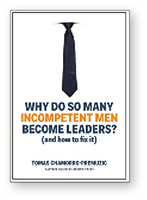 Why Do So Many Incompetent Men Become Leaders?: (and how to fix it)
Why Do So Many Incompetent Men Become Leaders?: (and how to fix it)
by Tomas Chamorro-Premuzic, Harvard Business Review Press, Cambridge, Mass., 2019, 184 pp. with index, $25 hardcover
The title may be enough to grab a reader, but in case that isn’t enough, Tomas Chamorro-Premuzic, an organizational psychologist at Columbia University, offers a solid case in
Why Do So Many Incompetent Men Become Leaders? for school district leaders to create or clarify leadership criteria.
He agrees there is definitely a glass ceiling for women in school district leadership, but a larger problem exists: too many men are awarded positions for which they are not well-suited. Offering psychological studies as his backdrop, various behavioral types (e.g., charisma, narcissism) are clearly shown to be advantageous for getting a leadership job, but also the reasons for underperforming.
An important theme of “confidence disguised as competence” is discussed multiple times. With a lack of clear selection criteria, hiring decisions often come down to someone’s gut feeling, which is a risky move.
Ideally for any school district leader who hires other leaders, this quick read compels me to both clarify leadership criteria and also consider the very criteria (implicit or explicit) on which I was hired.
Reviewed by Thomas Van Soelen, president, Van Soelen & Associates, Lawrenceville, Ga.
Why I Wrote this Book ...
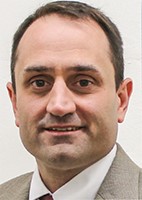
“The motivation comes from several concerns — that as the number of special education students grows, the educators tasked with supporting them in an inclusion setting may not have the tools to do so; that a current shortage of special education teachers may cause sub-par educational opportunities for our neediest students; and that students who fall within the IDEA disability categories should receive equal access to academic instruction, which occurs when best practice and research-based strategies are shared.”
Nicholas D. Young (superintendent, South Hadley, Mass., and AASA member since 1995) on co-authoring
The Special Education Toolbox: Supporting Exceptional Teachers, Students and Families (Rowman & Littlefield, 2019)
Superintendent Stress
A recent doctoral dissertation in educational leadership explored the overall impact of occupational stress on superintendents as well as analyzed the accuracy of the superintendents’ self-perceptions.
Completed by Adam Ehrman for his Ed.D. at Western Illinois University, the study surveyed superintendents and their executive assistants. The researcher concluded (1) females report more stress than males; (2) older superintendents report more stress than younger superintendents; (3) regularly changing state and federal regulations cause the most superintendent stress; and (4) superintendents believe stress from the job negatively impacts their health.
Furthermore, superintendents are most concerned about stress causing anxiety and believe they may be concealing the impact of stress from their administrative assistants.
Copies of “The Examination of Self-Perceptions Regarding the Impact of Stress on Central Illinois Superintendents” are available
disspub@proquest.com or 800-521-0600.
BITS & PIECES
School Communication
Real school-related examples and descriptions of simple and informal research techniques are offered in
Engaging Data: Smart Strategies for School Communication from the National School Public Relations Association.
Struggling Readers
One-to-one tutoring and whole class cooperative learning obtained similar positive outcomes in a Johns Hopkins University
research review on effective programs for struggling readers in elementary schools.
Financial Literacy
Discover and Discovery Education have launched a
free financial literacy curriculum for educators that provides step-by-step navigation and learning activities that will equip middle and high school students with skills and habits to reach financial goals.
Principal Pipeline
The
Principal Pipeline podcast from The Wallace Foundation returns for a second series, featuring five episodes devoted to conversations with leaders who are implementing principal pipelines in their states and districts.
School Safety
A
school survey on crime and safety from the National Center for Education Statistics found that an estimated 962,300 violent and 476,100 nonviolent incidents occurred in U.S. public schools during the 2017-18 school year.
Suicide Counseling
A
free guide detailing the process of becoming a suicide counselor from degree programs to licensure is available from counselor-license.com.
Classroom Instruction
A heavy emphasis on algebra content in grades 4 and 8 has increased, but teachers of lower-performing students place less emphasis on it in their classrooms, according to a
report from The Nation’s Report Card.
Bullying Prevalence
Twenty percent of students age 12-18 reported being bullied at school in 2017 and 41 percent of those reported that they believed the bullying would happen again, according to a
report from the National Center for Education Statistics.
Social Media
A new edition of
The Social Media Imperative is available from the National School Public Relations Association to help districts successfully use these tools for instruction, promotion and more.
Test Anxiety
An important factor in reducing test anxiety is increasing a student’s sense of being in control, according to a
study published in
School Psychology Quarterly.
Individualized Education
A
new report from the National Center for Education Statistics found that 13 percent of public school K-12 students had an IEP to address special needs.
Apprenticeship Project
In partnership with the U.S. Department of Labor, AASA is developing a youth apprenticeship toolkit that will contribute to the national knowledge base.
Over the next year, the toolkit and other materials (case studies and videos about four school systems) will be accessible at
www.Apprenticeship.gov and on
AASA’s site. These resources will support secondary educators to expand existing programs or create new initiatives for student apprentices.
National Certification
The new East 2022 cohort of the AASA National Superintendent Certification Program® will launch in Alexandria, Va., in July 2020. The 20-month interactive program is geared to new and early-career superintendents. New superintendents are eligible to apply.
For application submission and to learn about the curriculum, instructors and the one-on-one superintendent-mentor experience, visit
bit.ly/NationalCertification.